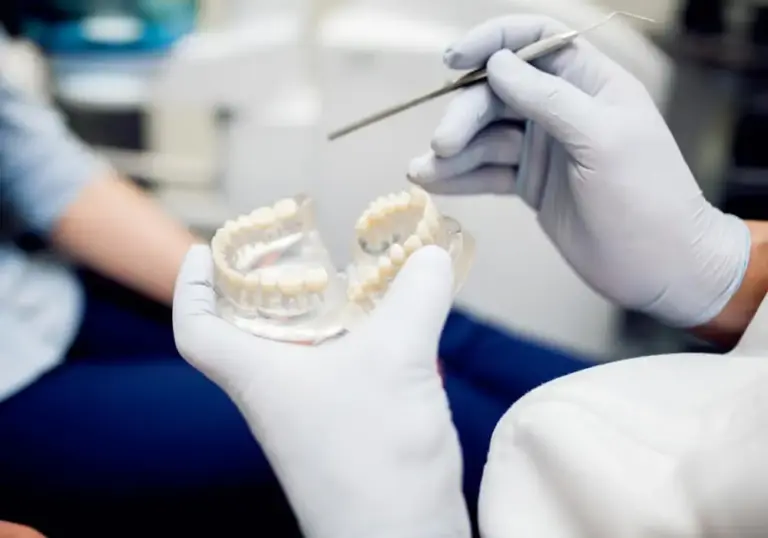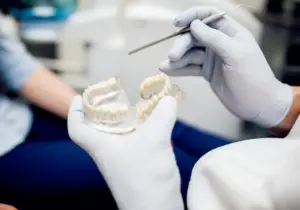When you think of the dental implant surgeon in your area, you probably imagine them methodically placing long-lasting dental implants in patients’ mouths in a somewhat calculated way. There might be some drills and x-rays included, but all in all, it’s pretty standard. Sure, technical skill is important in any medical surgeon field—no room for shaky hands here—but there’s another element at play when it comes to tooth implant dental surgeons: artistry.
An exceptionally skilled dental implant dentist doesn’t just pop in a new replacement tooth and call it a day. They’re crafting smiles by hand. When an oral surgeon specializing in implant dentistry replaces missing teeth on their patients, they have to create a natural-looking smile, match the implant to the existing teeth, and do tons more work that requires an artistic eye. So, what all goes into crafting a camera-ready smile?
Dental Surgeons Who Install Implants Need to Understand Facial Aesthetics
In nature, there are hardly ever two things that are exactly alike. This, of course, applies to people and extends to their smiles. No two people will have the same smile. For instance, one person might love drinking coffee, which darkens your teeth slightly over time. Another person might have extra-large front teeth due to genetics. It’s a dental implant dentist’s job to take these factors into consideration when building a tooth replacement. The best dental implant surgeons avoid a one-size-fits-all approach.
The easiest way for an oral surgeon who works with dental implants to match a replacement tooth is to look at the existing teeth and gums. Before the big day comes (likely at a consultation appointment), your dental implant dentist will study your existing teeth and gums and capture some images of them. This helps them construct realistic-looking replacement teeth. However, there are other factors that a dental surgeon who deals in implants will look at:
- Facial shape: your face shape can actually influence your ideal tooth size and shape.
- Lip line/smile line: your dental surgeon will study how your gums and teeth relate to your lips when smiling.
- Ethnicity and age: a great dental surgeon who creates long-lasting implants will take these considerations into mind when crafting a replacement.
Choosing the Right Materials and Shades
This part is sort of like a painter choosing a variety of colors when designing their next masterpiece. With the different materials that can be used in implants—like zirconia or ceramic tooth replacements—a dental implant surgeon has to choose the material that’s not only going to work well for their patient in terms of biocompatibility, but also which will match their natural teeth best.
It might sound crazy, but the material used has aesthetic considerations. It’s not just about the color of the material being used. Tooth enamel in its natural state is translucent—crazy, right? Light passes through, which gives natural teeth a subtle depth and dimension to them that dental surgeons who work with implant patients try to replicate. Thankfully, with some alterations, porcelain and zirconia are able to have degrees of translucency, allowing light to scatter within the crown. This prevents the tooth from looking too flat.
When a dental implant dentist matches the shade of a replacement tooth to the existing teeth, it’s actually a somewhat complicated process. Surgeons look at a few factors that help them determine the correct color for their patient:
- Hue: The color of the teeth. Are they pearly white? Yellow?
- Chroma: This refers to the saturation of the color.
- Value: This refers to the lightness of a tooth.
To figure out a patient’s perfect match, the dental implant surgeon will take them outside into daylight for best color accuracy. With a set of shade tabs (artificial sample teeth that are arranged by color), the surgeon will hold them to the patient’s teeth, making quick judgements. From there, the dental surgeon decides on the value first. It’s the hardest factor to adjust down the line, and it’s important to get it right on the first go. From there, they’ll narrow down the hue and chroma to find the best possible match.
There’s a lot more consideration that goes into creating a natural-looking dental implant than most would have thought. By working with an experienced dental surgeon who offers implants, you can rest assured that your implant will look as close to your existing teeth as possible—after all, you’re going to have them for a long time.










